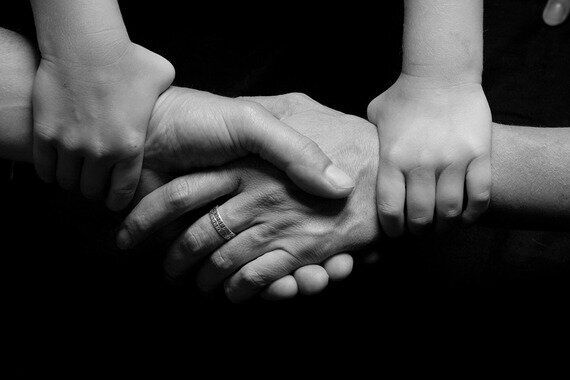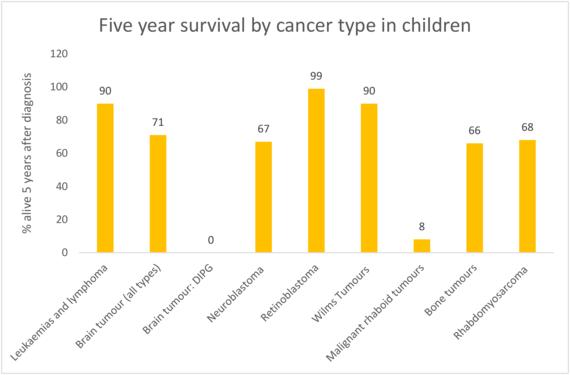
Childhood cancer is the number one cause of non-accidental death of children in the UK, so not as rare as we all think. Every year 4,000 children and young people are diagnosed with cancer.
The newest figures from the Office of National statistics have been released, showing that childhood cancer survival rates have improved, but what does this really mean?
As a whole, survival rates of children are improving. In fact on the surface, the current 82.9% survival rate sounds quite good until you look at what this means.
What do survival rates mean?
When you read something on survival rates for childhood cancer, usually the statistics quote a five year survival.
This is not whether a child will grow up to be a healthy adult or even be cured of the disease. Five year survival means just that, that the child is still alive five years after diagnosis. They may be palliative, severely disabled or life threatening health problems as a result of their treatment, but they are still classed as a success by surviving five years.
Is five year survival really what we should be looking at when a child's peers have a live expectancy of well over 70 years? Sadly, no. But this is how it is measured at present.
In reality, the majority of improvement in survival have been within a few of the most common cancer types, in particular, leukaemia. These advances are wonderful and are very much needed. They have happened due to the work of hard working charities that have fundraised and supported these children. The treatments for these children however remain very long (up to three years), intense and very traumatic.
Improvements in these areas however have pushed up average survival rates for all children. But when you look at the break down, there are a number of tumour types with still very poor or abysmal survival rates that have made little or no progress in the last 30 years.
In 1975, there was little difference in outcome whether you received a diagnosis of leukaemia or a diagnosis of a solid tissue tumour. However, today, there is a big difference. The death rate of children with solid tumours is far higher.
Funding Disparities
The reality is that the small amount of funding that children receive is concentrated on the most common forms of childhood cancer. This in some ways is completely understandable as it will help the greatest number of children, but what about the rest of these children, the other the other 32%?
A third of children with cancer have one of the rarer childhood cancers. By definition, almost all have a much lower chance of survival.
Let's have a look at some survival rates
The average five year survival rate, across all childhood cancer types, is 82.9%.(Office of National Statistics).

Some cancers have good survival rates, but even retinoblastoma (eye cancer) with an excellent survival rate often is at the expense of the child losing an eye.
Certain rare tumours, such as DIPG (brain) and rhabdoid tumours have particularly poor survival rates, and these have remained pretty unchanged for 30 years.
Other conditions of note particularly are soft tissue tumours (rhabdomyosarcoma) and neuroblastoma with rates lagging behind other areas.
This graph speaks volumes - although average five year survival in children is almost 83% the true survival of a child generally depends on the cancer type they are diagnosed with.
Another area that hugely impacts survival is delays in diagnosis. If a child is diagnosed later, they have much lower chances of cure. This is why we are working to spread awareness of the signs and symptoms as well.

Join our fight today at the Grace Kelly Ladybird Trust, fight for our children.
Because the children of today all deserve to have a tomorrow.
For other blogs on childhood cancer, please see the Grace Kelly Ladybird Trust blog page.